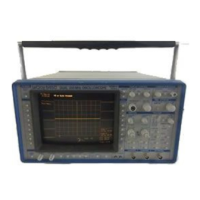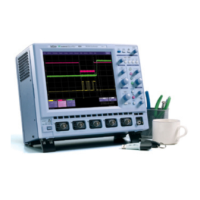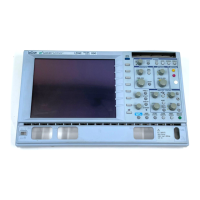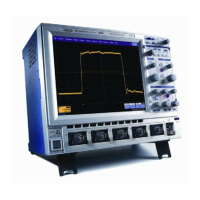EXT - With the Trigger SOURCE set to EXT, a signal applied to the
BNC connector labeled EXTERNAL can be used to trigger the scope
within a range of ± 2 V.
EXT/IO - With the Trigger SOURCE set to EXT/10, a signal applied
to the BNC connector labeled EXTERNAL, can be used to trigger the
scope within a range of ± 20 V.
Trigger COUPLING (30) - Selects the type of signal coupling to the
trigger circuit:
AC Trigger - Signals are capacitively coupled; DC levels are
rejected and frequencies below 60 Hz are attenuated.
LF REJ - Signals are coupled via a capacitive high-pass filter
network. DC is rejected and signal frequencies below 50 kHz are
attenuated. The LF REJ trigger mode is used whenever triggering on
high frequencies is desired.
BF RBJ - Signals are DC-coupled to the trigger circuit and a
low-pass filter network attenuates frequencies above 50 kHz. The
HF REJ trigger mode is used when triggering on low frequencies is
desired.
DC - All of the signal’s frequency components are coupled to the
trigger circuit. This coupling mode is used in the case of high
frequency bursts, or where the use of AC coupling would shift the
effective trigger level.
Trigger
LEVBL (33) - Adjusts the level of the signal required
generate a trigger.
The trigger range is as follows:
± 5 screen divisions - with CHAN 1 or CHAN 2 as trigger source
None (zero-crossing) with LINE as trigger source
± 2 V with EXT as trigger source
± 20 V with EXT/IO as trigger source
SLOPE (25) Se lects th e si gnal ed ge us ed to act ivate the
circuit.
POS - Requires a positive-going edge of the trigger signal.
NEG - Requires a negative-going edge.
trigger
5-7
Manual Operation

